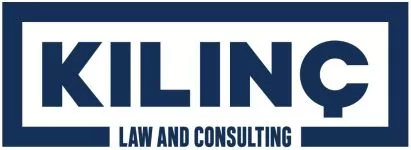1. INTRODUCTION
As it is known, food advertisements have a great impact on consumers and especially children. Advertising, especially for certain age groups and children, plays a major role in the sales policies of companies. Food companies support their advertisements for certain products with the health declarations and create effects that make sales on the consumer attractive. For this reason, food advertisements and health claims are subject to legal regulations and it is aimed to prevent the negative effects of excessive and unconscious consumption on the society. Within the scope of this article, current legislation provisions regarding food advertisements will be evaluated and issues to be followed in food advertisements will be addressed.
2. LEGAL ARRANGEMENTS FOR FOOD ADVERTISEMENTS
A. Advertising Limitations on Health Declaration
According to the Turkish Food Codex Regulation on Nutrition and Health Declarations ("Regulation on Nutrition and Health Declarations"), the health declaration, which is a factor shaping the sales policies of the companies; defined as a statement that suggests or implies the health relationship of any food group, food, or food components. In this regard, as an example of the health declaration; the following statements may be shown.
- "Calcium is essential for the preservation of normal bones." or "Calcium is essential for the protection of normal teeth."
- "Vitamin D contributes to the normal function of the immune system."
- "Meat or fish contribute to the improvement of iron absorption when consumed with other foods containing iron."
- "Walnuts contribute to increased flexibility of the veins."
- "Phosphorus is essential for normal growth and bone development in children."
Some restrictions are stipulated in the Regulation on Nutrition and Health Declarations so that health claims may be used in food labels, promotions and advertisements. Use of the health declaration in accordance with these limitations;
- Shall not be ambiguous, false or misleading.
- Shall not be in doubt of the nutritional adequacy or reliability of other foods.
- Shall not be such as to support or encourage excessive consumption of a particular food.
- Shall not be said to suggest or imply that a varied and balanced diet cannot generally provide nutrients in appropriate quantities.
- In a way that may cause concern in the consumer; Shall not be in a way to refer to changes in body functions through written, illustrated, graphic or symbolic representations.
In addition, in accordance with the 7th article of the Regulation on Nutrition and Health Declarations; In order to use health statements in the label, promotion and advertisement of foods, it has been made compulsory for the food to have at least two of the following conditions in terms of nutritional profile.
- Maximum 100 mg / 100 kcal sodium in its composition,
- Maximum 10% of the energy it contains comes from saturated fatty acids,
- Maximum 10% of the energy it contains comes from added sugar,
- Naturally, it contains at least 55 mg / 100 kcal calcium in its composition.
In accordance with Article 6 of the Regulation on Nutrition and Health Declarations; Exceptions regarding the use of health claims in labels, promotions and advertisements are foreseen and the exceptions are as follows;
- Trademark or proper name in the labelling, presentation or advertisement of a food that may be interpreted as a nutrition or health declaration, may be used provided that the relevant nutritional or health declaration conditions in the Nutrition and Health Declarations Regulation are met and the related declaration is made.
- Instead of the nutritional or health declaration expressions in the labeling, presentation or advertisement of a food, the use of equivalent expressions so as not to change and strengthen the meaning is determined by the guide to be published by the Ministry.
The health declarations permitted to be used in the label of the foods in accordance with the regulations given above shall also be used in the promotion and advertisement of the food provided that they comply with the provisions of the Regulation on Nutrition and Health Declarations.
B. General Limitations on Food Advertisements
The most important legal regulation regarding food advertisements is found in Law No. 6112 on the Establishment and Broadcasting Services of Radio and Television ("Law").
Within the scope of the Law, the provisions regarding the regulation of commercial communication, broadcasting and services are discussed. Commercial communication is, audio or silent images designed together with a program or placed in a program and given to directly or indirectly promote the product, service or image of a natural or legal person engaged in an economic activity, including radio and television advertising, program support, tele-shopping and product placement, for a fee or similar provision or for self-promotion purposes
The provision of the Law regarding food advertisements is in the paragraph 7 of the article 9 titled "Commercial Communication in Broadcasting Services" and the mentioned provision is as follows;
"Commercial communication of food and beverages containing foods and substances that are not recommended for excessive consumption in general nutrition diets cannot be included with or within children's programs."
With this provision, it is aimed to protect the general nutritional order of the society and to prevent the negative effects of the feeding habits of children in particular. Certain restrictions have been imposed on the delivery of food ads. However, these limitations are arranged in general terms within the scope of the Law and their details are discussed in the content of the Regulation on the Broadcasting Service Procedures and Principles ("Regulation").
In accordance with Article 9 of the Regulation, which regulates the general principles of commercial communication in broadcasting services; food supplements, herbal products, various devices and any product other than these will not be perceived as health and declaration of medicine.
The details of the implementation made in general terms in the Law are regulated in the 7th paragraph of the article 9 of the Regulation. Accordingly, commercial communication of foods and beverages containing foods and substances such as fat, acids that turn into fat, salt / sodium and sugar, which are not recommended for excessive consumption in general nutrition diets;
- Shall not be done at the beginning and end of children's programs or inside these programs.
- In the event that it is carried out with or in other programs, It should be made with the written warnings prepared by the Ministry of Health, which can be easily read by the audience at the bottom of the screen, will be broadcast as a flowing band and includes statements that encourage regular and balanced nutrition.
In the general nutrition diets, the Food Profile Model and the Prepared Food and Beverage List ("List") prepared by the Ministry of Health are taken as basis in the determination of food and beverages that are not recommended for excessive consumption and are published on the website of the Radio and Television Supreme Council ("RTÜK").
Another regulation regarding food advertisements is in Article 9 / A of the Regulation, which regulates the principles of tele-shopping broadcast service. According to this, any kind of satisfaction and thank you letter regarding food supplement products or expressions and visual presentations about the experience of the people shall not be used. Statements that health will be adversely affected if the product is not used shall not be included.
C. Category System in Food Advertisements
Another important issue envisaged by the Regulation with regard to food advertisements is the category system. As stated above, the foods that are not recommended for excessive consumption in general nutrition diets will not be advertised mainly with or within children's programs. In addition, health warnings should be included in the advertisements of some foods in programs other than children's programs. The List, which is based on the regulation; consists of 3 (three) categories: Red Category, Orange Category and Green Category.
The meanings and limitations of the categories are as follows;
I. Red Category: Foods That Will Not Be Permitted in Children's Programs
The foods in the red category that will not be advertised
in children's programs are listed as follows.
chocolate and candies, waffles, energy bars, sweet sauces and
desserts, cakes, sweet biscuits, fruit shares, chocolate covered
biscuits, cake mixes, chips, crunchy cookies, juices, energy
drinks, non-alcoholic sugary or sweetened drinks, edible ice
Food products in these categories will not be advertised with children's programs. Since almost all of the content broadcasted on thematic children's channels are children's programs, such broadcasting organizations will not be able to advertise the food items in the red category.
Organizations in other types of broadcasts (general, news, health, education, sports, etc.) will not be able to advertise the products of the red category in their children's programs if they include children's programs in broadcast streams.
The advertisements of foods in the red category can be featured in other programs; however, in this case, written warnings prepared by the Ministry of Health should be placed at the bottom of the screen, which can be easily read by the audience, broadcast in the form of a flowing band and contain statements that encourage regular and balanced nutrition.
II. Orange Category: If Specified Criteria Complied Foods to be Advertised
Nuts, crackers, breakfast cereal, full-fat dairy products, dough products, oil, etc. are included in the list. products were counted and some criteria for these foodstuffs were determined. If these criteria are not followed, these food items will not be advertised together with children's programs. The regulation has envisaged a two-year transition period for the advertisement of food items in the orange category. We would like to point out that the two-year transition period is the date of 11.04.2020 and the inspection of the foods in the orange category will be started as of this date.
III. Green Category: Foods Allowed to Advertise
Foodstuffs in the green category include fresh fruits, vegetables, meat, fish, eggs, etc. in the list. counted as products. Food products in the green category can be advertised in children's programs and other programs.
3. CONCLUSION
In food advertisements that have a great impact on consumers and especially children, certain restrictions and criteria have been introduced in order to protect the general diet and public health, and these criteria are discussed in detail above. Especially in the recent period, the category system and restrictions in the categories of food advertisements attract attention and gain importance. However, we would like to state that the transition process for the food advertisements in the orange category has ended as of 11.04.2020 and that from this date, the audits for the related food advertisements will begin.
The content of this article is intended to provide a general guide to the subject matter. Specialist advice should be sought about your specific circumstances.


